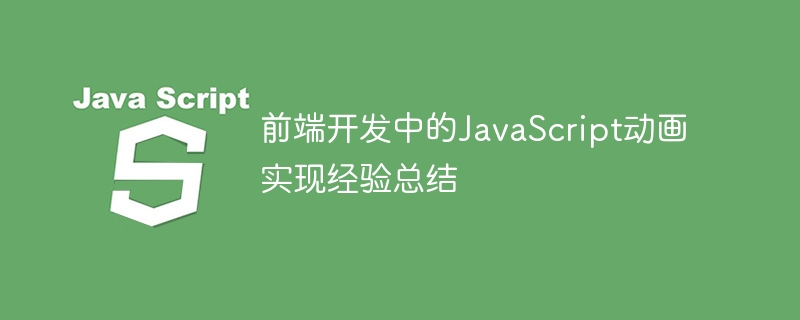

Summary of JavaScript animation implementation experience in front-end development
With the rapid development of the Internet, the demand for page interaction is getting higher and higher, and users have higher requirements for animation effects. It's getting higher and higher. In front-end development, the implementation of JavaScript animation is a crucial part. Through animation effects, you can enhance the user experience and increase the attractiveness of the page. However, achieving a smooth and precise animation is not easy and requires certain skills and experience. This article will summarize some JavaScript animation implementation experience in front-end development, hoping to be helpful to beginners.
1. Use the requestAnimationFrame function
When making JavaScript animations, we usually use setTimeout or setInterval to control the execution of the animation. However, these two functions have an obvious shortcoming, which is that they cannot effectively utilize the refresh rate of the browser, resulting in unsmooth animation effects. In most modern browsers, a better alternative is already available, and that is the requestAnimationFrame function. This function can tell the browser that we want to execute the specified callback function the next time the page is redrawn, thereby achieving a smoother animation effect.
2. Use hardware acceleration
When implementing animation effects, we can use the browser's hardware acceleration to improve performance. By setting the transform or opacity attribute of an element, the browser's hardware acceleration mechanism can be triggered. This can reduce CPU usage and improve animation performance and smoothness.
3. Use the easing function
The easing function can make the animation effect more natural and smooth. By changing the position, size or transparency of elements, various easing effects can be achieved, such as spring effects, fade-in and fade-out effects, etc. In actual development, you can use some common easing function libraries, such as $.easing in jQuery, to achieve various easing effects.
4. Optimize performance
When implementing animation effects, pay attention to optimizing performance to avoid lags and frame drops. First, we should try to reduce the number and complexity of animated elements and avoid processing too many elements at once. Secondly, we must make reasonable use of the browser's caching mechanism to avoid repeated calculations or rendering. Finally, you can consider using CSS3 animations instead of JavaScript animations, because CSS3 animations can make more efficient use of hardware acceleration, improving performance and smoothness.
5. Compatibility processing
When implementing animation effects, the compatibility of different browsers must be taken into consideration. Since different browsers have different levels of support for animation effects, we need to use some compatibility techniques to ensure the uniformity of animation effects. You can use CSS features supported by modern browsers to achieve animation effects, and then use JavaScript to detect whether the browser supports these features and make corresponding compatibility processing.
To sum up, the implementation of JavaScript animation requires mastering some skills and experience. By using the requestAnimationFrame function, hardware acceleration, easing functions, performance optimization and compatibility processing, you can achieve smooth, precise and compatible animation effects. At the same time, we must continue to learn and try new technologies and methods to adapt to the ever-evolving front-end development environment. I hope this article will be helpful to front-end developers in implementing JavaScript animations.
The above is the detailed content of Summary of JavaScript animation implementation experience in front-end development. For more information, please follow other related articles on the PHP Chinese website!




